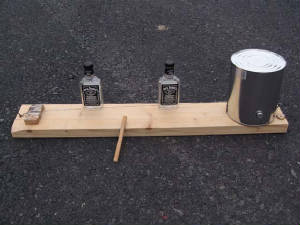|
|
Taking the diddley bow into the 21st century: exploring
the limits of a primative instrument.
The diddley bow has traditionally been considered an "entry-level" instrument,
normally played by adolescent boys, who then graduate to a "normal" guitar if they show promise on the diddley bow.
Because it was considered a children's instrument, very few musicians continued to play the diddley bow once they reached
adulthood.
But suppose instead of learning technique and repertoire on the diddley bow or cigar box guitar and then using this knowledge to play a "normal" guitar, we reverse the process, taking the knowledge learned in playing a "normal" guitar and applying it to the more primitive instrument? What can we learn, and what kinds of music can be made if we apply several decades of experience of "normal" guitar technique and general musical theory to this primitive "beginner" instrument? The musical challenge of the diddley bow is therefore: What kinds of sounds can be made on one string, and what techniques can be used to make them? How can those sounds be integrated into a piece of music? How can the apparent limitations of the instrument be overcome with ingenuity and novel technique? For One String Willie (as a musical project), one esthetic limitation that keeps the music rooted in tradition while allowing expansion into non-traditional playing techniques is that the method of making the sounds should use found (or potentially found) materials (i.e., fingers, bottles, sticks, bones, pipes, cans, leather belts). This was the musical challenge I set for myself when starting out with this instrument. I have played the diddley bow as my main axe since setting myself this challenge, and the journey since then has led pretty far off the highway of mainstream music. I am still exploring the territory, and hope you will formulate your own musical challenge and pursue it to find your own music. |
